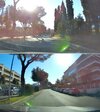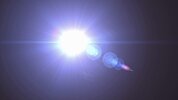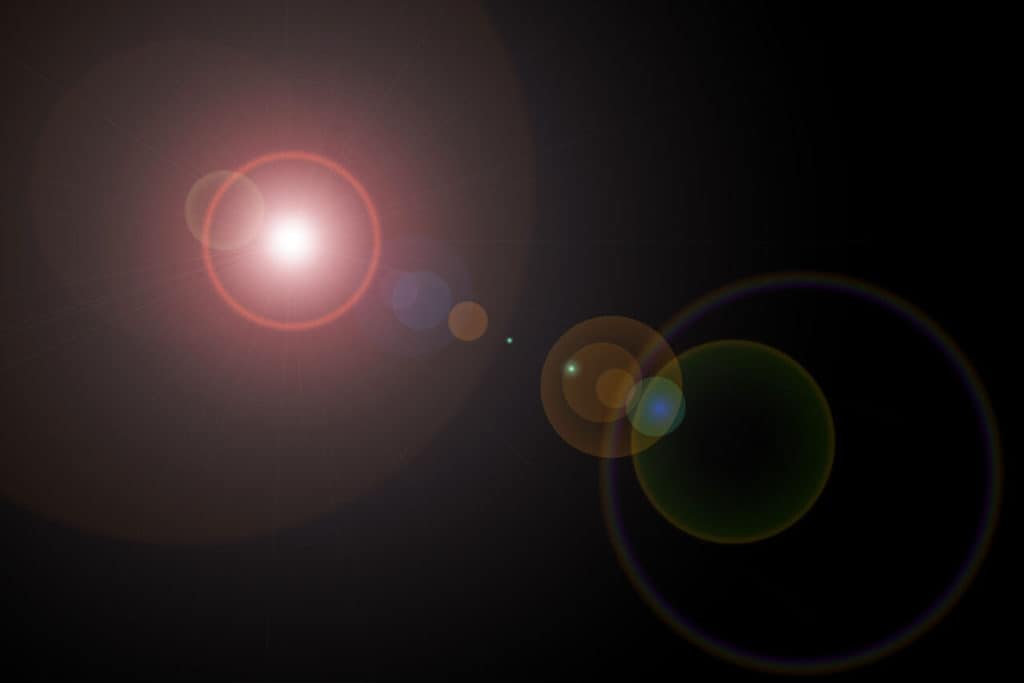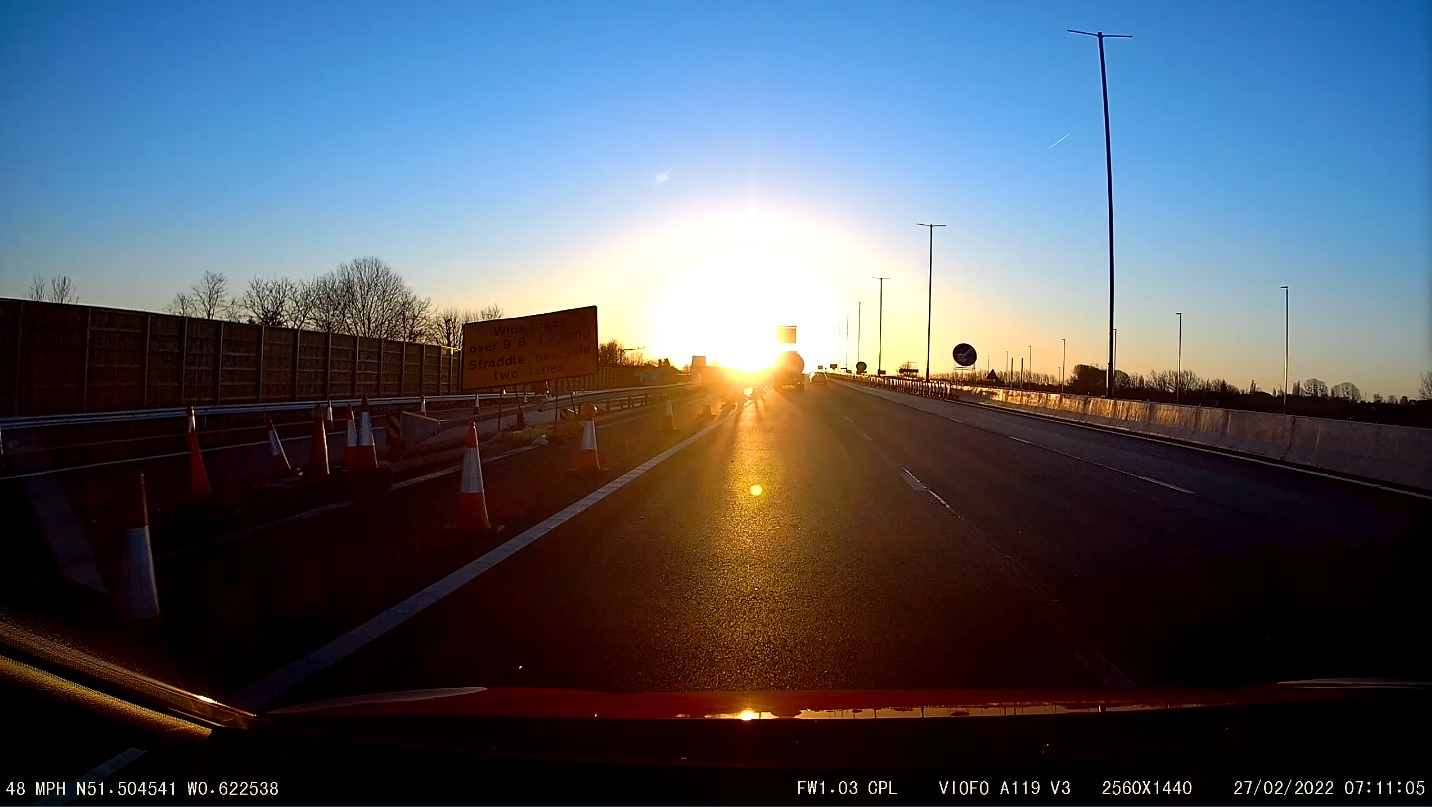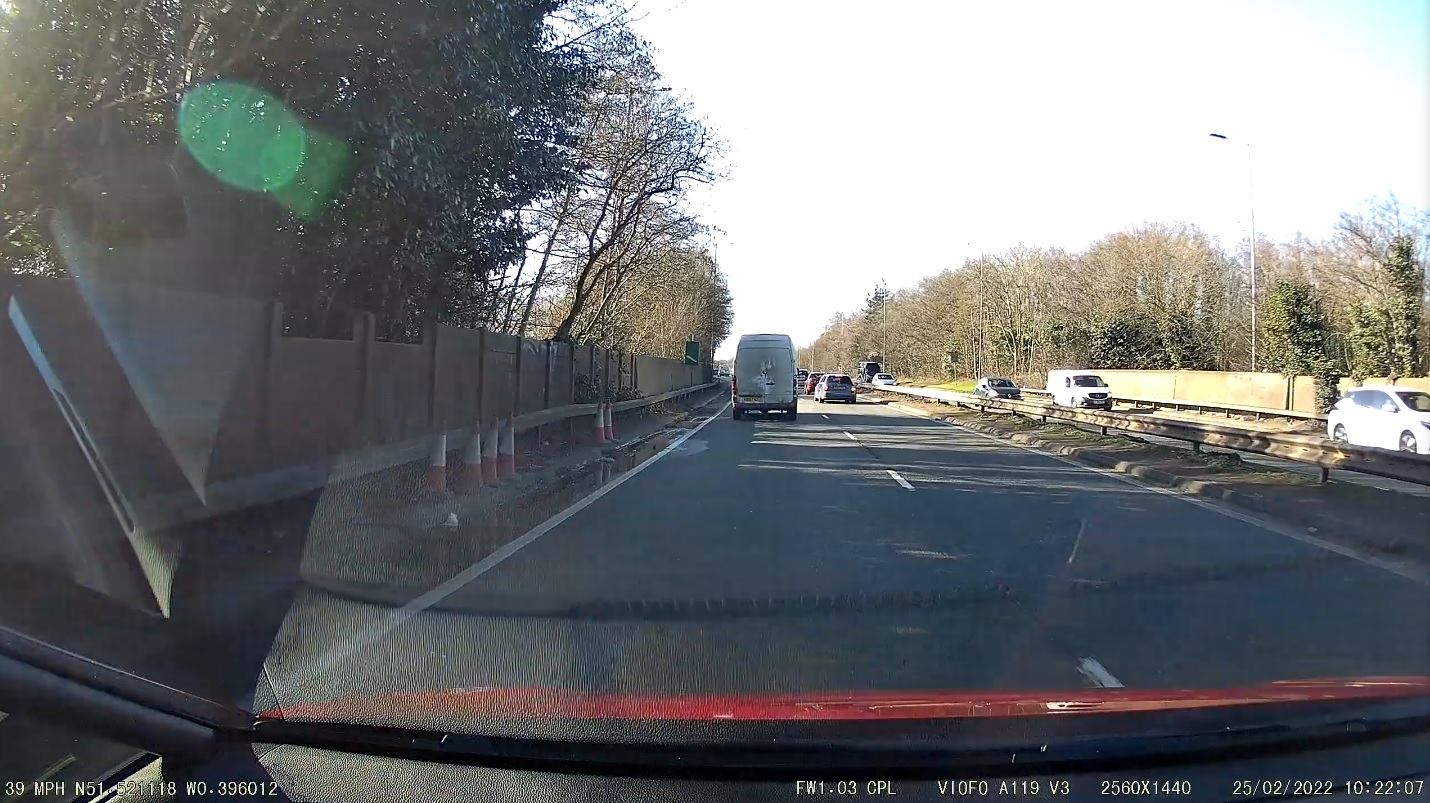What you are seeing is phenomenon called "Lens Flare" It is
completely normal. It will happen when intense bright sunlight enters your lens from an oblique angle and scatters around inside your lens barrel before hitting the camera's sensor. It will usually occur around sunset or sunrise when the sun is low in the sky. The shape of the flare can be influenced by different factors such as the shape of the aperture, also called the diaphragm, which can be round or in some instances pentagonal, hexagonal or octagonal depending on the aperture type. On a dash cam lens it will always be round because it has a fixed round aperture. Often lens flare is also round or curved due to the shape of your front lens surface or the shape of one or more of the curved elements inside the lens barrel. Lens flare can also manifest as streaks of light. The phenomenon will only last a few seconds at most until the sunlight is coming from a different angle. In some situations, photographers use a
lens hood to reduce or eliminate flare but dash cams rarely have one. Some lenses are better at reducing lens flare than others, but virtually
all lenses will do this to one degree or another, even the finest, most expense lenses available. The lens on your V3 is actually not bad with lens flare when compared to some others. Just ignore the issue.
The color you see is caused by the multi-coating on the front surface, which in this case is green but can often be some other color like red or blue. If you look carefully at the front of your lens, you will notice it has a subtle coloring. You might see multiple colors. That is the ultra-thin optical multi-coating that is applied to the glass lens surface during manufacture. It is there to reduce reflections and enhance contrast. You could see several colors of flare in your images depending on the particular type of multi-coating that was used.
Read the following links and you will gain a better understanding of what I am describing.
